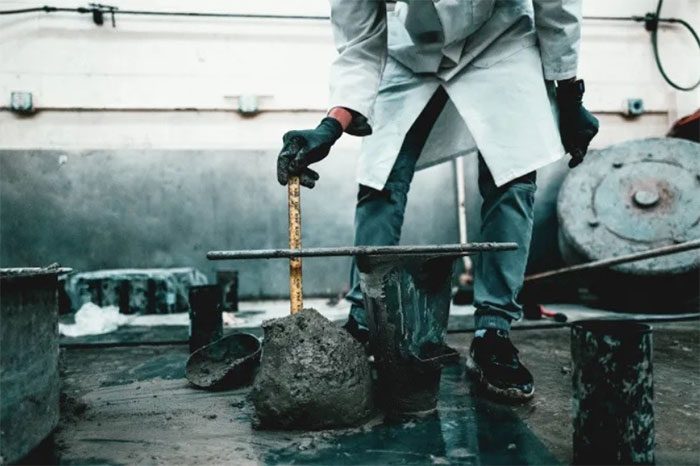The AI research team at Meta has discovered a new concrete mixing formula that is stronger and more environmentally friendly.
Artificial intelligence systems have demonstrated significant potential in the field of discovering new compounds, whether it’s screening vast datasets to identify compounds or developing new recipes using the flavor profiles of various ingredients.

The Meta AI research team has developed an AI system to discover a more environmentally friendly concrete mixing formula. (Photo: Meta)
Recently, a research team from Meta AI collaborated with researchers from the University of Illinois, Urbana-Champaign, to create an AI that can generate and refine formulas for low-carbon concrete with even greater strength than traditional concrete, according to Engadget.
The traditional methods of producing concrete, which we manufacture in billions of tons each year, are not environmentally friendly. In fact, they account for approximately 8% of the total global carbon dioxide emissions annually. Significant advancements have been made in recent years to reduce the carbon footprint of the concrete industry, as well as to enhance the material’s strength, elasticity, and even its ability to charge electric vehicles. Nevertheless, concrete production remains one of the most carbon-intensive industries in modern construction.
To reduce the carbon emissions associated with concrete, simple methods such as altering the main components can be employed. This material is made up of four basic components: cement, aggregates, water, and additives, with cement being the most carbon-intensive component. Therefore, to minimize the amount of cement required, the research team will incorporate lower-carbon materials such as fly ash, slag, or ground glass.
Similarly, aggregate materials like gravel, crushed stone, and sand can be replaced with recycled concrete. The challenge lies in the numerous potential component materials that can be used, and how they interact with each other will affect the structure of the concrete. In short, there are many combinations for researchers to experiment with, select, and refine. With such a vast number of tests, the researchers from Meta trained an AI to perform this task much more rapidly.
Working with Professor Lav Varshney from the Department of Electrical and Computer Engineering and Professor Nishant Garg from the Department of Civil Engineering, both at the University of Illinois at Urbana-Champaign, the Meta research team trained this AI model using a dataset on concrete compressive strength. This dataset includes over 1,000 concrete formulation recipes as well as their structural properties. The team identified the carbon emissions of the resulting concrete mixtures using the Environmental Product Declaration (EPD) tool from the Cement Sustainability Initiative.
Among the potential formulations generated, the research team selected five of the most promising samples and refined them multiple times until they met the requirements. The refinement process took only a few weeks and resulted in a concrete formula that met specifications by replacing up to 50% of the required cement with fly ash and slag. Subsequently, Meta partnered with Ozinga, a concrete company that built Meta’s latest data center in Illinois, to further refine the formula and conduct real-world testing.
In the future, the Meta research team hopes to further improve this formula and gain a better understanding of how it withstands various weather conditions such as wind or high humidity.





















































